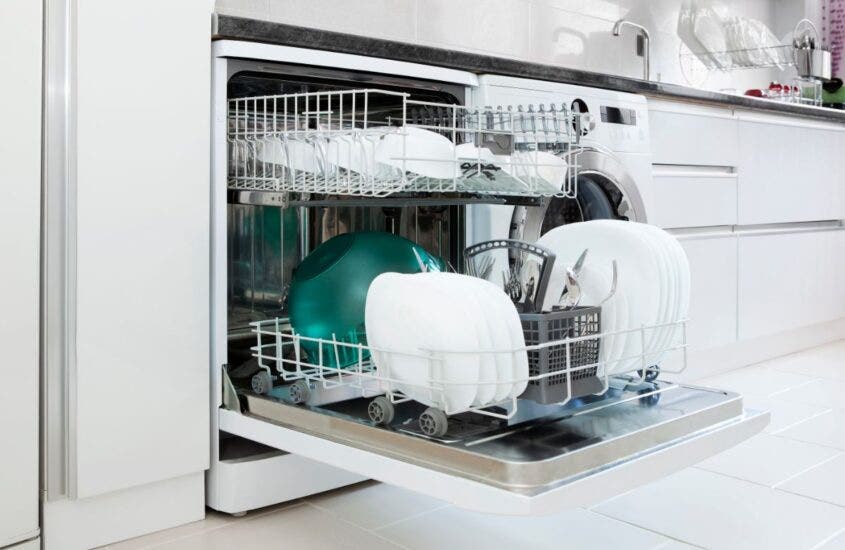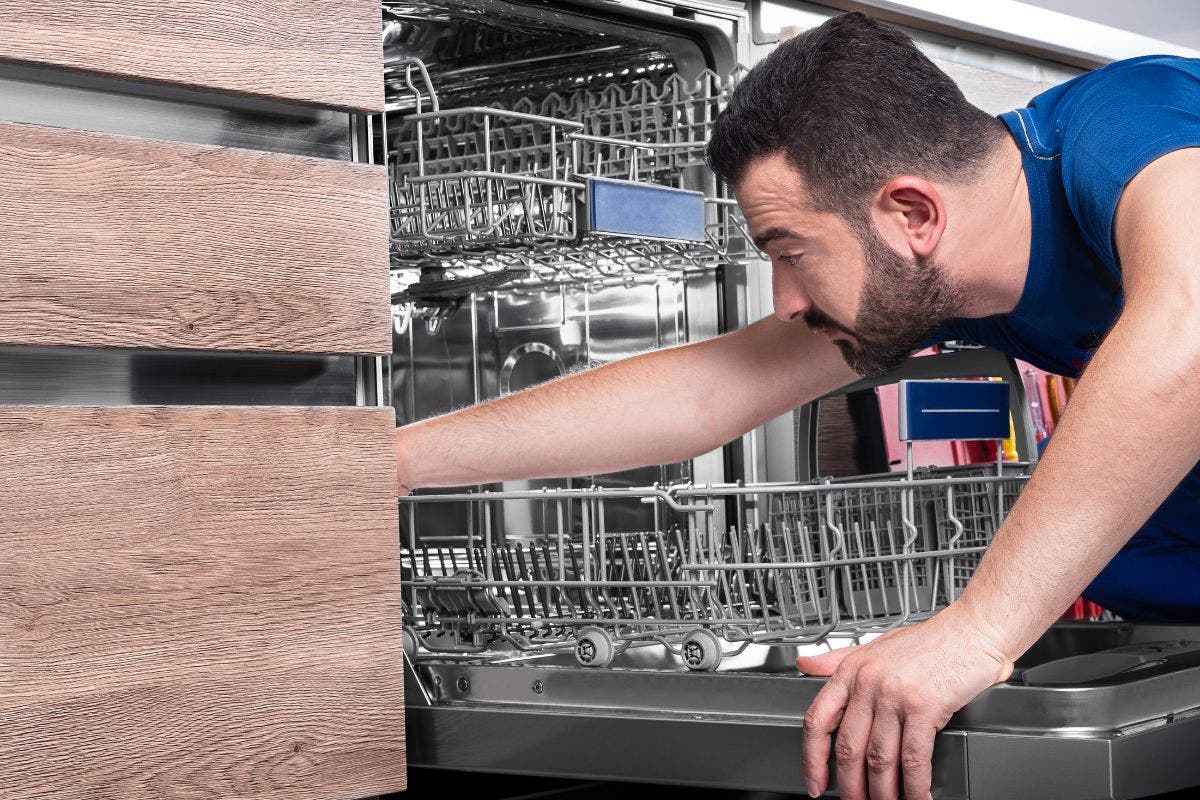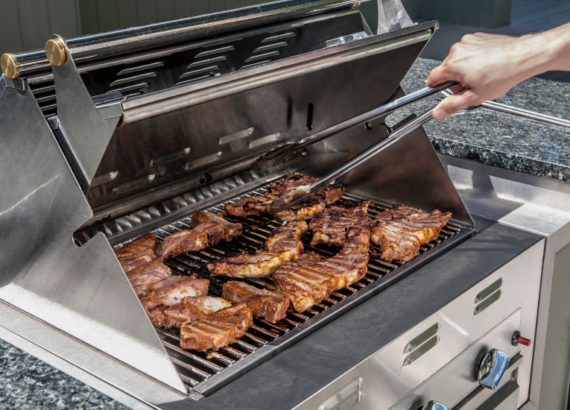How To Install A Dishwasher

How To Install A Dishwasher – Dishwashers are an amazing feature to have in your kitchen. Say goodbye to standing over the sink for hours trying to scrape off food and dirt from your plates, and hello to relaxing on the sofa as the dishwasher does it all for you!
Of course, in order for this to be possible, you need to install it first, which is easier said than done.
However, we are here to help1 In this article, we will detail a step-by-step guide on the best way to install your dishwasher. So, if this is of interest to you, read on for more!
Table of Contents
Installing A Dishwasher: Required Tools
To install a dishwasher correctly, you will need:
- A screwdriver
- Tape measure
- A wrench
- Electrical tape
- Hose clamps
- A dishwasher installation kit that features a new supply line and a dishwasher 90 (the elbow fitting) (like this one)
Installing A Dishwasher: The Method
Here are the steps that will help you install a dishwasher in the most efficient way possible!
Step 1: Turn Off The Hot Water And Power
Before you can start installing the dishwasher, you first need to ensure that all of the power and hot water that will be used for the dishwasher is shut off.
You can turn off the power by using the home breaker panel and turn off the hot water by checking for a valve under the sink and closing it.
Step 2: Decide Where You Want Your Dishwasher To Go
You need to make sure that there is enough space in your kitchen before you begin the installation process for the dishwasher.
A dishwasher will use the waste and water lines that are connected to your basin. So, placing it close to one is the best choice!
Of course, it is much easier to replace a dishwasher than it is to try and find a new space for one. There is typically one standard size for a dishwasher in inches 24 wide, 35 high, and 24 deep.
However, if you do not already have a dishwasher, then you will need to make space for one. You can do this by removing a cabinet.
This step is easier if the cabinets are not built-in because you can use a jigsaw or reciprocating saw to cut into the cabinet’s face.
Do this only as high and wide as the space needed for the dishwasher, do not go above or below these dimensions.
Here’s how to do it:
- Cut into the cabinet’s base using the dimensions of the dishwasher It is important to ensure that these cut lines are straight.
- It is best to use a laser level or chalk line in order to get the straightest possible line.
- Now, you need to make a hole for the wiring and plumbing.
- Provided your dishwasher will be placed close to the sink, you can use a drill and core bit to make a hole in the sidewall of the right cabinet.
Step 3: Read The Instructions
This is an often overlooked but important step. While we provide the best guide for you, it is best to read the instructions because there may be specific information about certain models that we cannot include.
Step 4: Connect The Drain Line

Here, you will need to take the dishwasher out of the box and lie it down so you can access underneath it. You will find a connection area and in this area, a drain hose.
To connect this hose to the drain line of the dishwasher, you will need to take off the cap situated over the drain line and place it on the drain hose.
Make sure that this is securely in place by using a small hose clamp, and then thread the drain hose through the sink’s connecting hole.
Now, you can push your dishwasher into place and adjust its legs with a wrench.
Step 5: Connect The Dishwasher Elbow And The Water Line
Attach the dishwasher 90 (the elbow fitting) to the dishwasher water line or valve. You will find this line or valve situated under the dishwasher.
After you have connected the dishwasher, the water line, and the drain line together, you can begin working on the electric!
Step 6: Make Sure The Electrical Connections Are Secure
In order for the dishwasher to have power, you will need to connect their electrical wires. Make sure your power is off before you begin this step!
If there is already a power supply next to your dishwasher spot, then you will need to locate the junction box’s wires and uncap them.
After they are uncapped, slide them through the wire nut/sleeve and make sure they are tight and secure.
If you want to, you can wrap them in electrical tape of corresponding colors.
Lastly, you will need to take the copper ground wire and place it under the round green screw, making sure you tighten it.
When all of the connections are in place, you can go ahead and place the junction box back to where it is supposed to be.
Step 7: Make Sure The Drain Hose Is Reconnected
In previous steps, we talked you through where to place the drain hose. Now, you will need to connect it to the sink tailpiece.
The dishwasher drain hose will fit onto the pipe’s branch. You should use a clamp to make sure it is connected securely to the tailpipe. Alternatively, you can connect it to the disposal. The choice is entirely up to you.
Step 8: Test The Dishwasher
The final step is to test the dishwasher. Once you are confident everything is connected, turn the water valve on and keep an eye out for any leaks.
If there are leaks, check the connections and re-clamp whatever is necessary. Once you are sure there are no leaks, you can use screws to secure the dishwasher to the countertop.
Then, you can turn the power back on and use your dishwasher as you please!
Do I need to hire an installer to put in my dishwasher?
Providing you follow a few simple rules, you should be able to install your dishwasher (or reinstall it) on your own. The instructions that came with the appliance, or the owner’s manual, should always be followed since dishwashers vary from model to model.
What is required to install a dishwasher?
New dishwashers require three connections: a power cord, a water supply, and a drain line. If a DIYer understands what is needed, they can do all of these. If you are unfamiliar with electrical wiring, the power connection may prove the most challenging.
Do you need a plumber to install a dishwasher?
There is a minimum of one plumbing fixture and a power outlet for sink dishwashers. A licensed plumber knows where to put the copper pipes, and an electrician knows where to put the power outlet. When installing a dishwasher, a mini stop tap and a pressure limiting valve are needed.
Final Thoughts – How To Install A Dishwasher
Installing a dishwasher may seem like an arduous task, but by following these steps you will get it set up in no time at all!







Comments are closed.